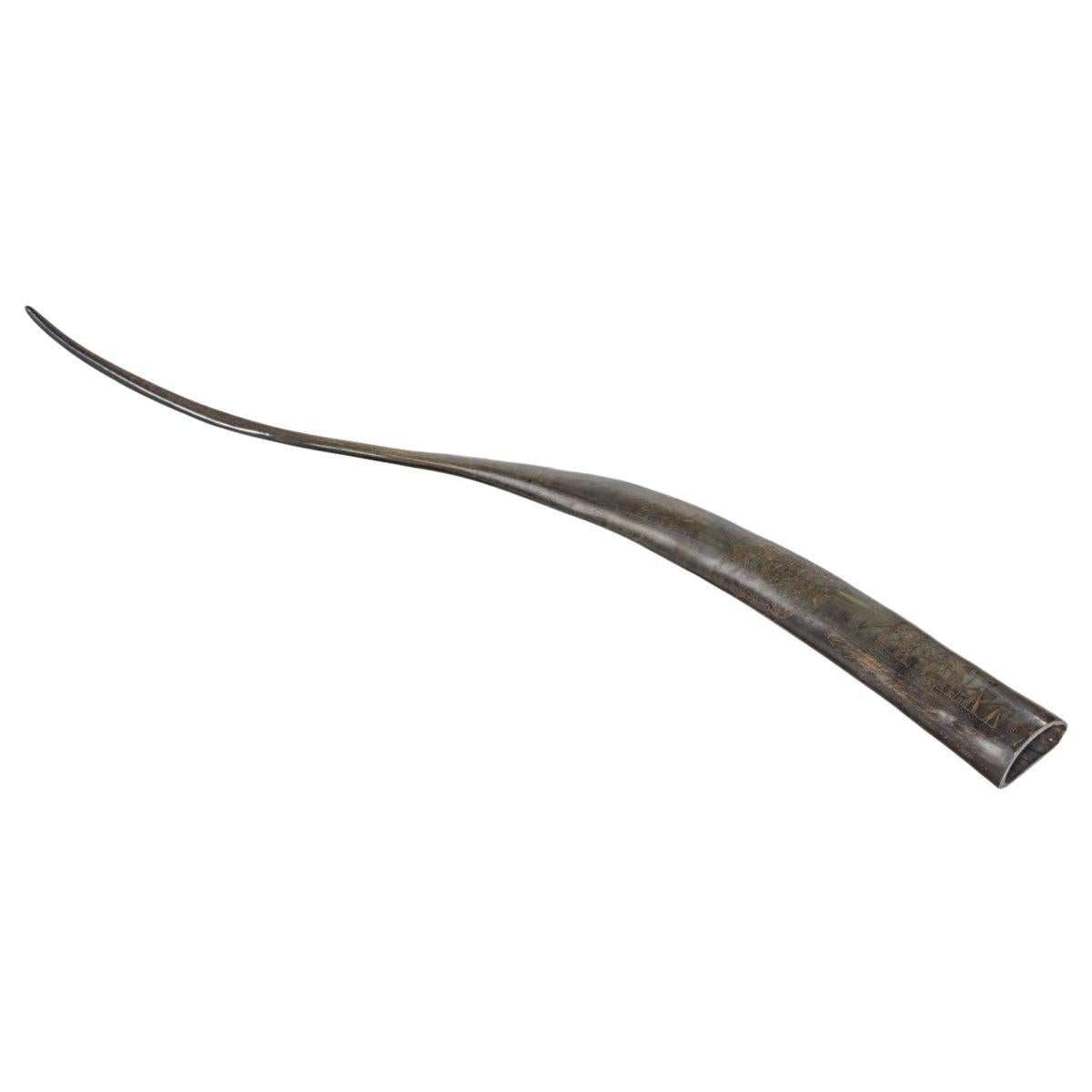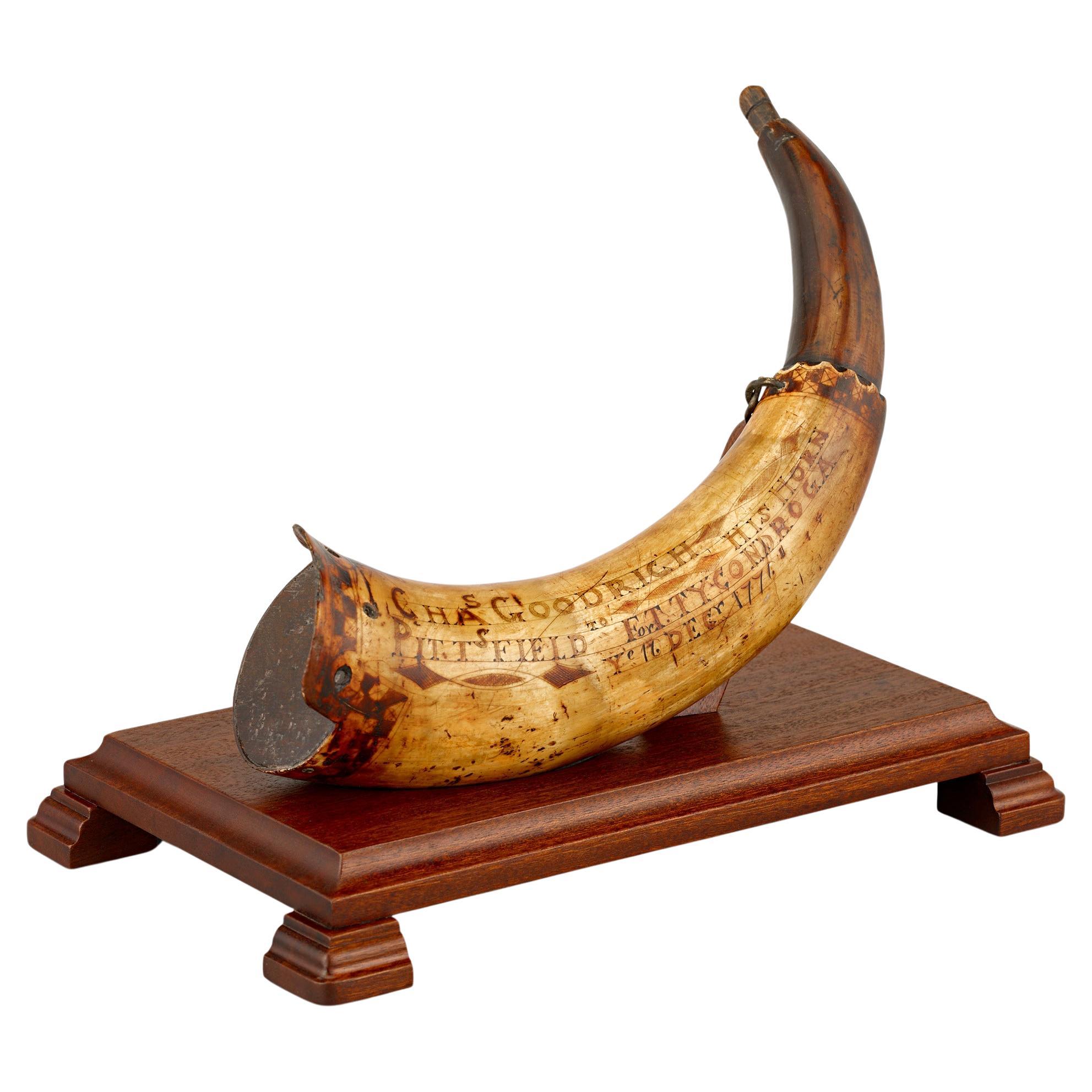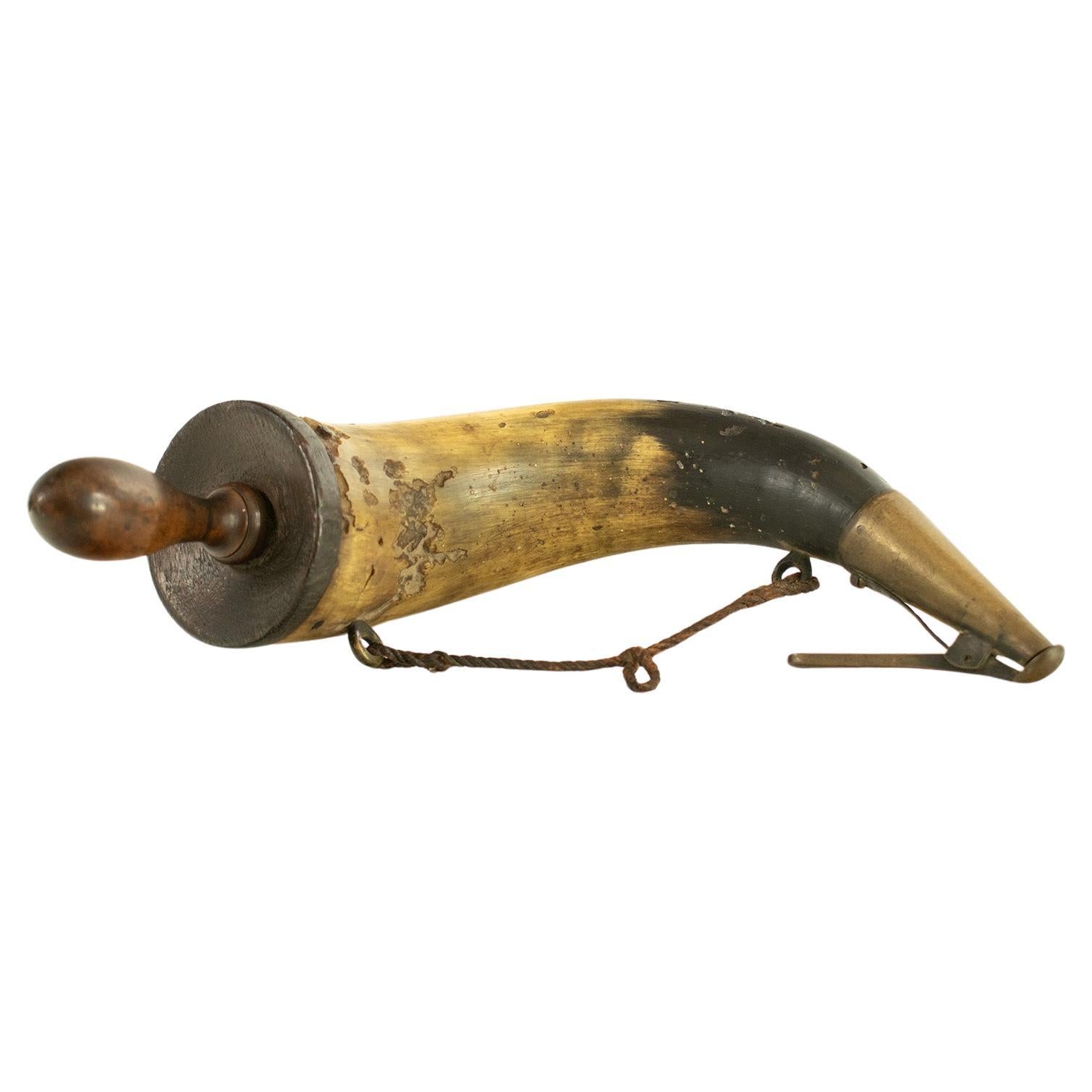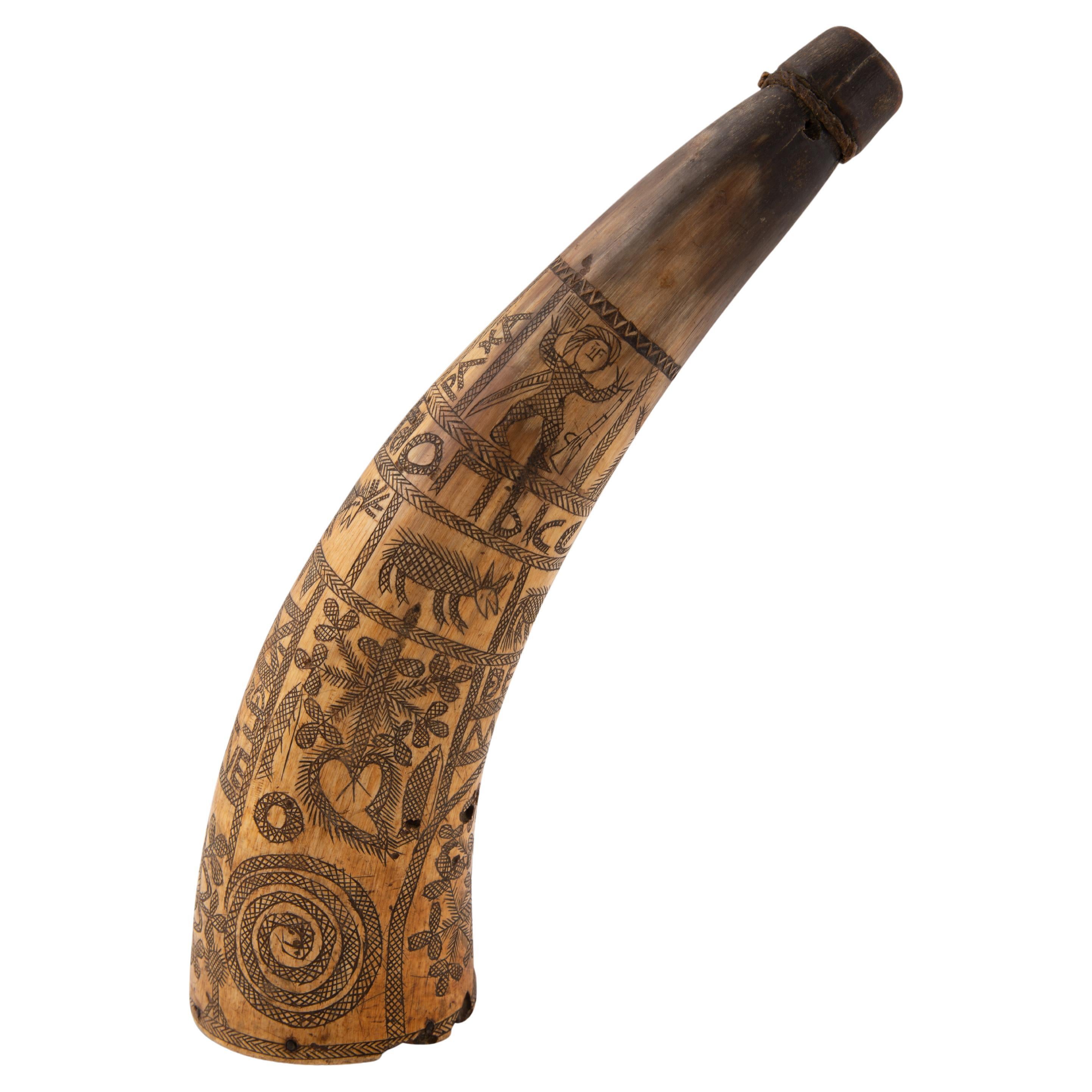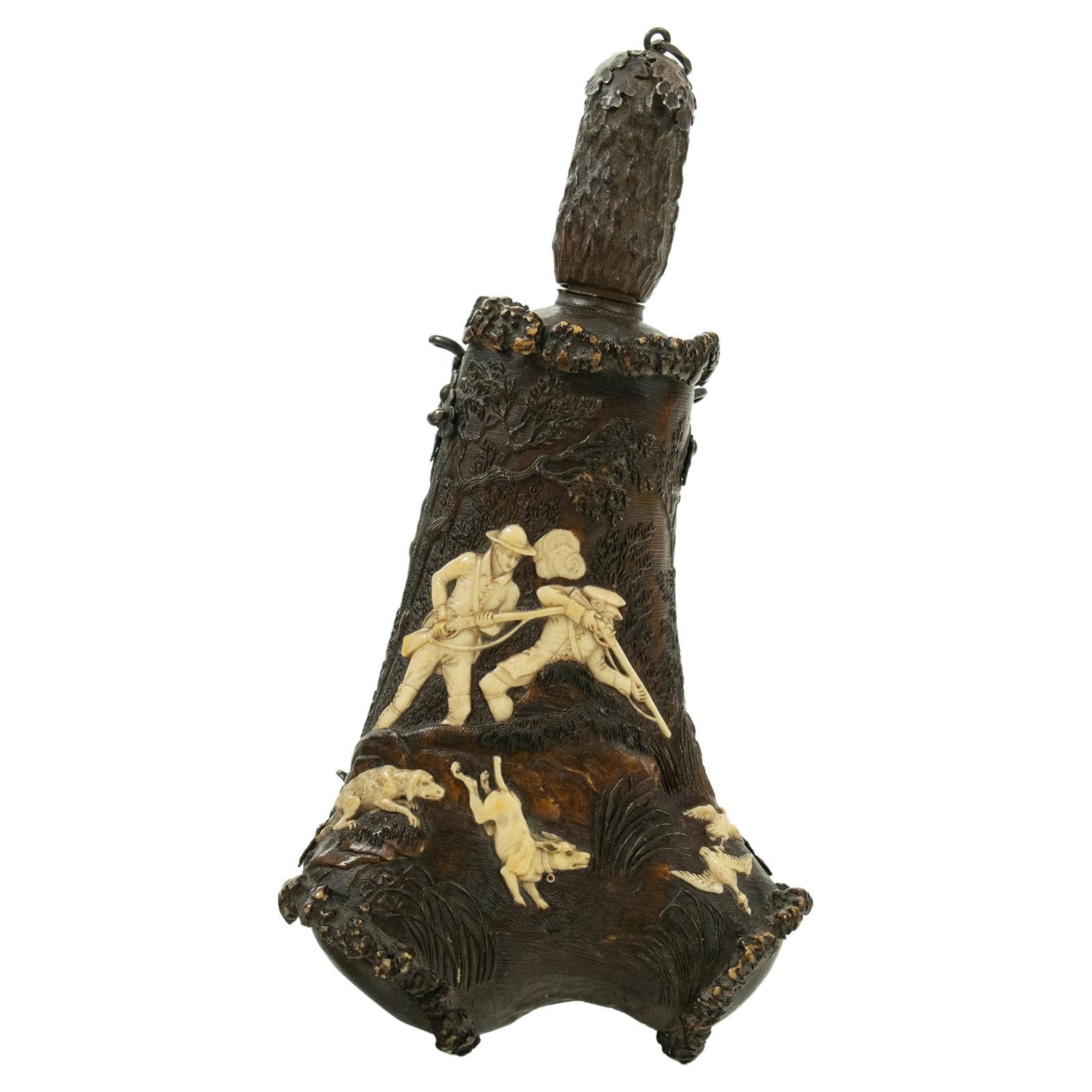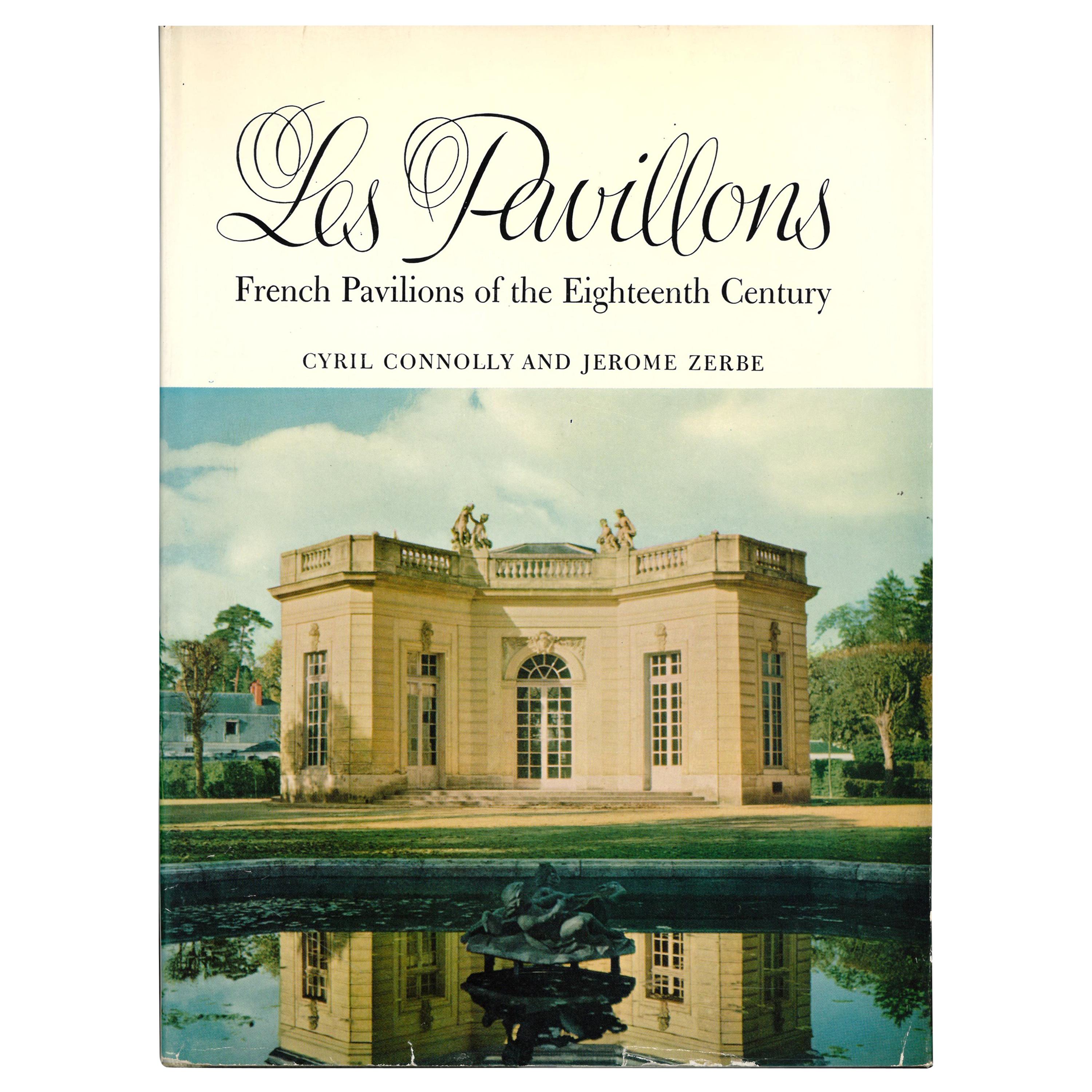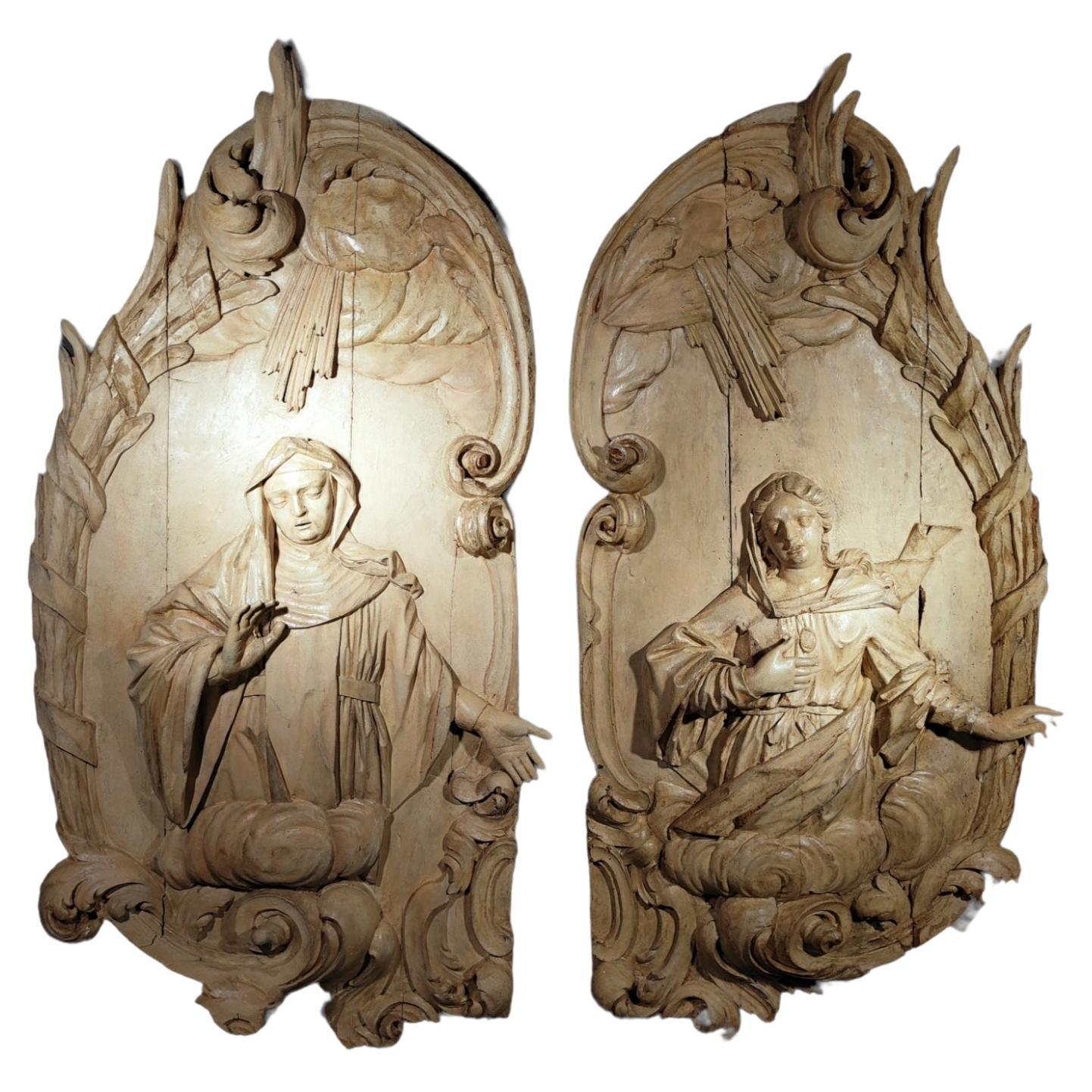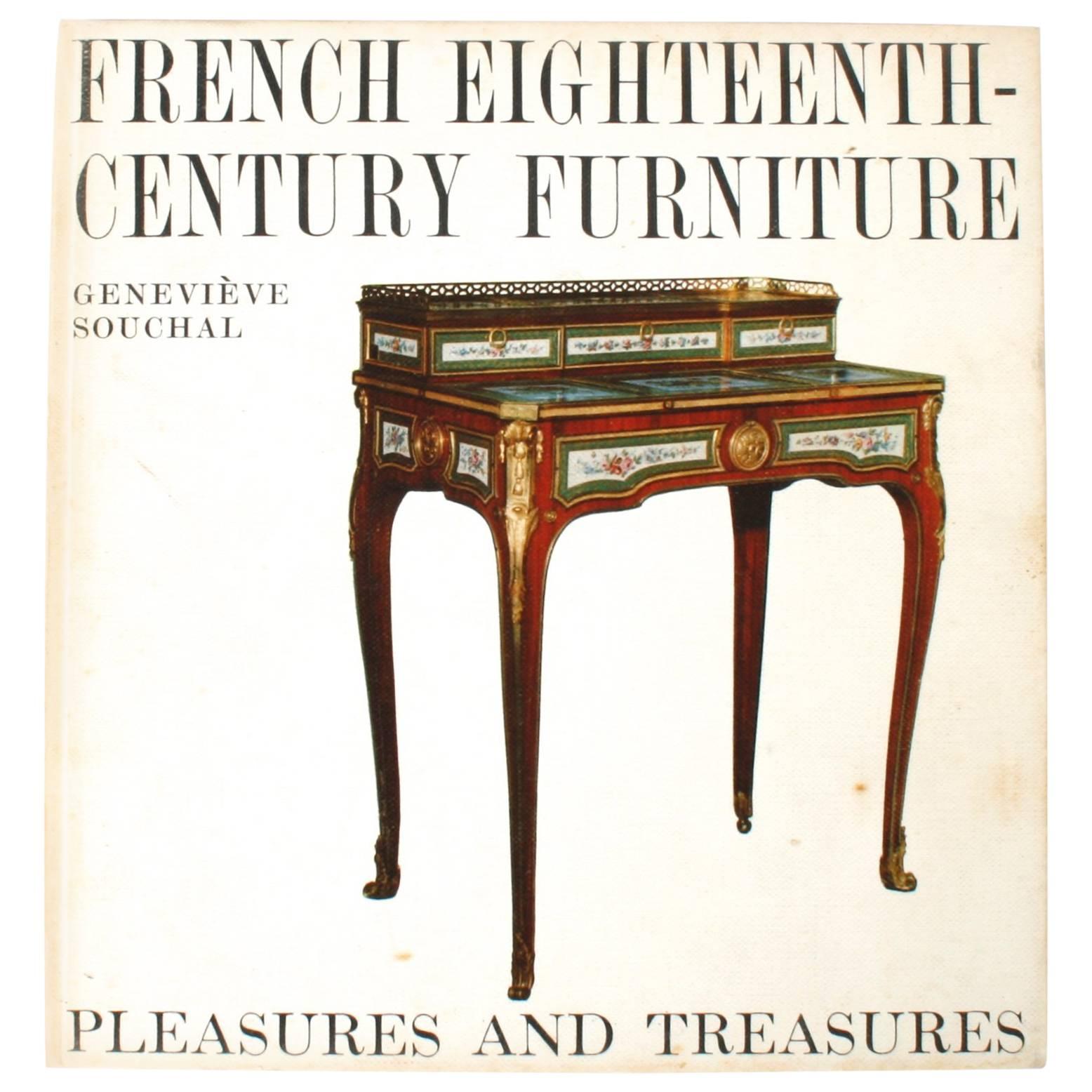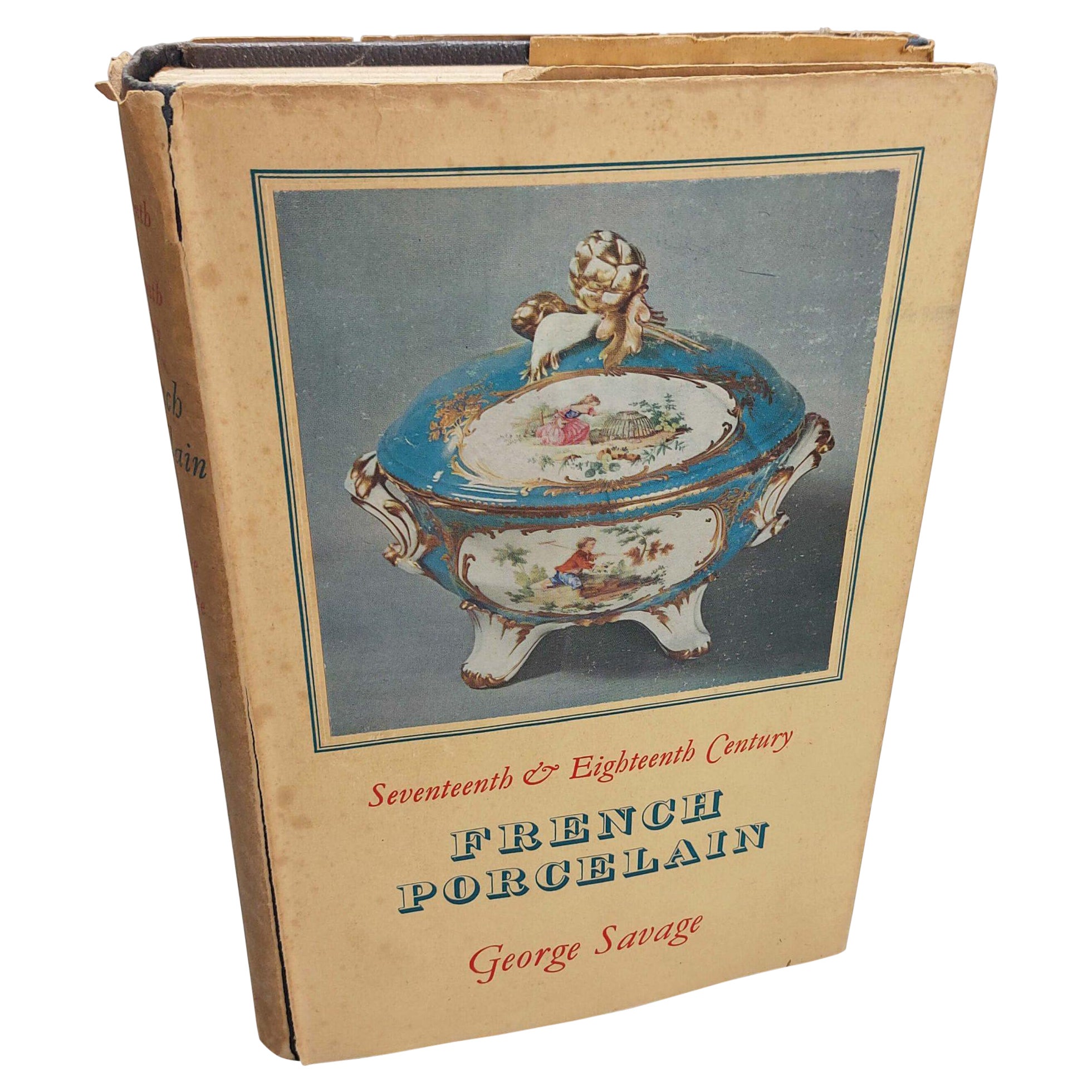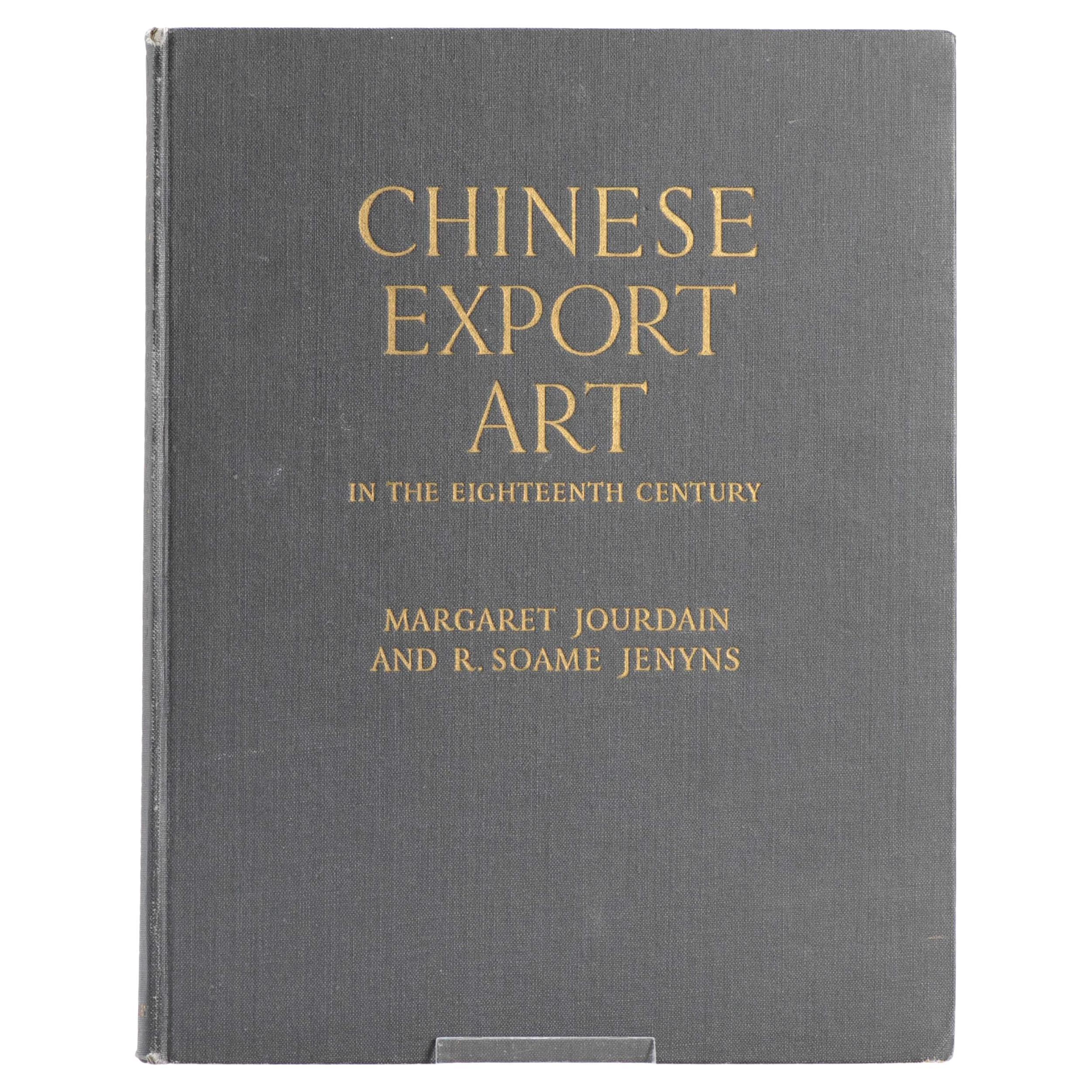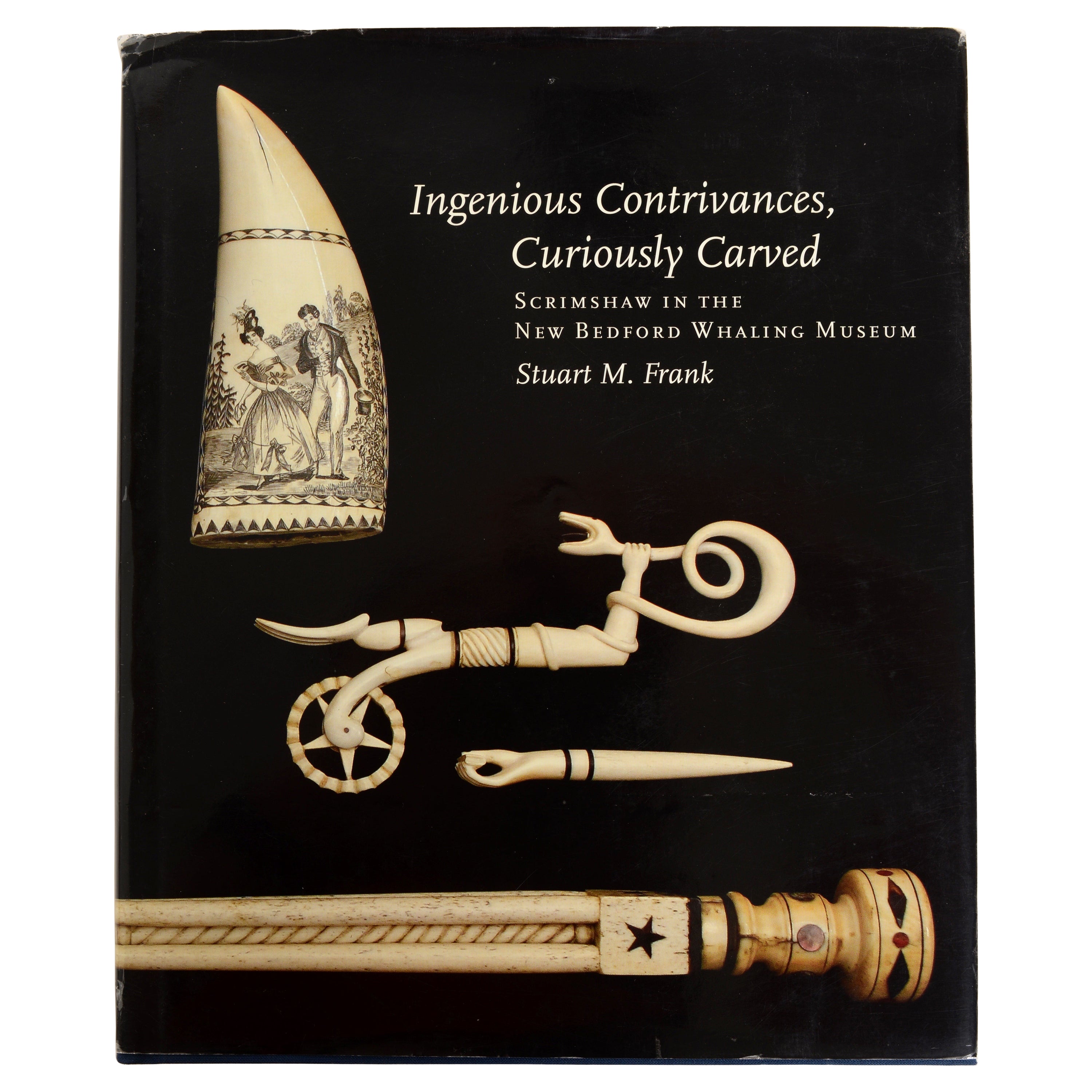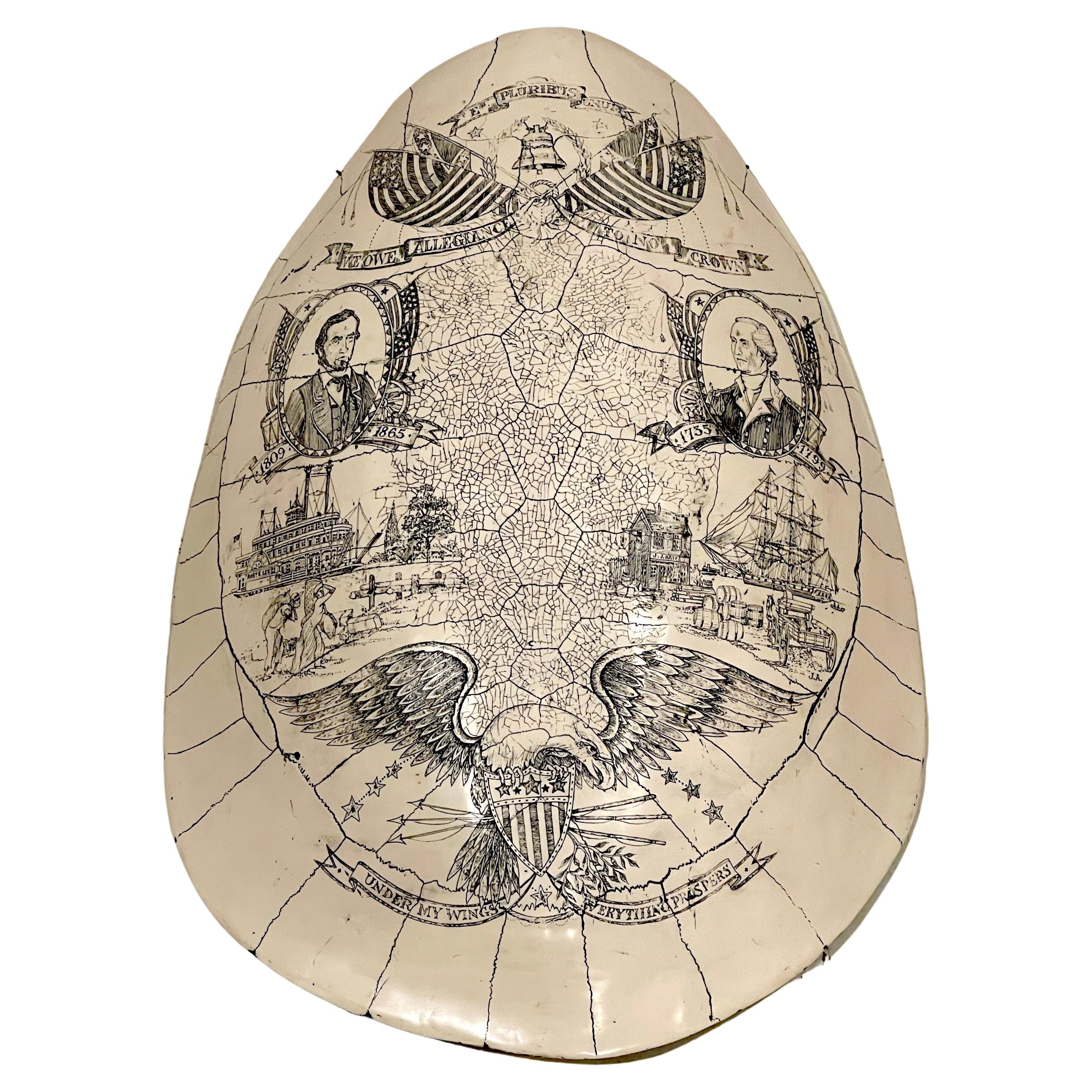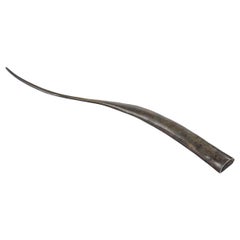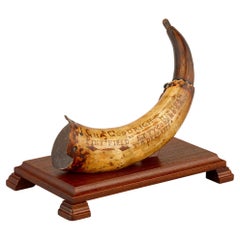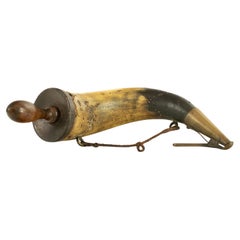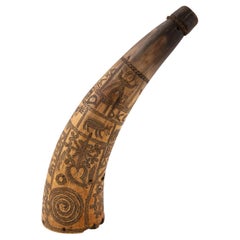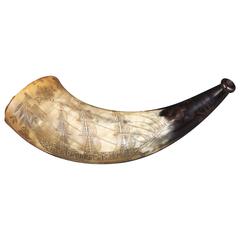
Marine Scrimshaw Powder Horn, Eighteenth Century
View Similar Items
1 of 2
Marine Scrimshaw Powder Horn, Eighteenth Century
About the Item
- Dimensions:Height: 3 in (7.62 cm)Width: 11.5 in (29.21 cm)Depth: 3.75 in (9.53 cm)
- Period:
- Date of Manufacture:1770
- Condition:
- Seller Location:London, GB
- Reference Number:1stDibs: LU97541101760
Authenticity Guarantee
In the unlikely event there’s an issue with an item’s authenticity, contact us within 1 year for a full refund. DetailsMoney-Back Guarantee
If your item is not as described, is damaged in transit, or does not arrive, contact us within 7 days for a full refund. Details24-Hour Cancellation
You have a 24-hour grace period in which to reconsider your purchase, with no questions asked.Vetted Professional Sellers
Our world-class sellers must adhere to strict standards for service and quality, maintaining the integrity of our listings.Price-Match Guarantee
If you find that a seller listed the same item for a lower price elsewhere, we’ll match it.Trusted Global Delivery
Our best-in-class carrier network provides specialized shipping options worldwide, including custom delivery.You May Also Like
Rare Scrimshaw Decorated Horn
Located in Lymington, Hampshire
A rare scrimshaw decorated horn, engraved over one side with the Royal Arms countersigned and titled ship profiles for the Great Eastern, the Great Britain,...
Category
Antique 1860s English Nautical Objects
Materials
Horn
Revolutionary War Powder Horn
Located in New Orleans, LA
Powder Horn
Engraving by Charles Goodrich
1776
Powder horns stand among the rarest and most treasured forms of American folk art. Unlike commercial objects, these deeply personal items were crafted by soldiers, sailors and explorers for practical use during their journeys. Through scrimshaw—an intricate technique of engraving bone or horn with a simple jackknife and filling the crevices with available pigments like soot or ash—these individuals left tangible marks of their hopes, dreams and experiences. This exceptional American Revolutionary War powder horn belonged to Charles Goodrich (1720-1816), a significant figure in early Pittsfield, Massachusetts history. The horn displays distinctive period characteristics with the inscription "PITTSFIELD" clearly visible on its amber-colored surface.
Charles Goodrich, born in Wethersfield, Connecticut in 1720, became a prominent civic leader in Pittsfield. He built the first house in the settlement in 1754 and served in various official roles, including Justice of the Peace and town representative to Boston. While Goodrich's name may not appear prominently in history textbooks, historical documents—particularly his September 3, 1776 petition to the Massachusetts Assembly—reveal his compelling story. The petition shows that Goodrich faced accusations of being a British sympathizer and draft evader. According to his account, he was targeted for his public office, physically assaulted by a man named James Morey and subsequently fined by a local committee. Goodrich maintained that he merely defended himself when attacked and claimed ignorance of requirements to either serve as a drafted soldier or hire a substitute—accusations that branded him unpatriotic during the revolutionary fervor.
The Massachusetts Council's concurrence with Goodrich's petition likely inspired his subsequent military service. His powder horn, bearing the inscription of Pittsfield, accompanied him to Fort Ticonderoga, where Simonds' Regiment of Militia (2nd Berkshire County Regiment) was stationed during the difficult winter of 1776-1777. Fort Ticonderoga, a strategic stronghold in upstate New York, had been seized from the British in May 1775 by Ethan Allen and Benedict Arnold. By the time of Goodrich's service, American forces occupied the fort while preparing for an expected British counterattack. In August 1777, Goodrich and Simonds' Regiment participated in the Battle of Bennington—a decisive engagement where Patriot forces under General John Stark defeated British and Hessian troops. This victory significantly weakened General John Burgoyne's invasion force, contributing to his surrender at Saratoga in October 1777—a pivotal turning point that helped secure French support for the American cause.
Powder horns captivate elite collectors and major museums alike. The Metropolitan Museum of Art recognized their significance by dedicating an entire exhibition to American Engraved Powder Horns...
Category
Antique 18th Century American American Colonial Historical Memorabilia
Materials
Horn
LARGE GUNNER'S POWDER HORN Naval - French, late 18th century.
Located in TEYJAT, FR
Original Large French Gunner's Powder Horn, Naval - French, late 18th century. Of large size used to load cannons aboard ship.
With fitted wooden plug and brass dispensing spout.
T...
Category
Antique 19th Century Arms, Armor and Weapons
Materials
Horn, Wood
Powder keg. Engraved horn, rope, cork. Spain, 19th century.
Located in Madrid, ES
Powder keg. Engraved horn, rope, cork. Spain, 19th century.
A container for storing gunpowder made from a cow's horn and decorated on the outside with a series of figurative, geomet...
Category
Antique 19th Century Spanish Neoclassical Revival Sports Equipment and M...
Materials
Metal, Other
Fine Carved German or Austrian 18th Century Stags Horn Powder Flask
Located in TEYJAT, FR
A FINE CARVED GERMAN OR AUSTRIAN 18TH CENTURY STAGS HORN POWDER FLASK - The front face expertly carved with two hunters in a wooded river bank scene with hounds and two flighting duc...
Category
Antique Mid-18th Century European Arms, Armor and Weapons
Materials
Horn
$2,271 Sale Price
20% Off
Les Pavillons: French Pavilions of the Eighteenth Century (Book)
Located in North Yorkshire, GB
by Cyril Connolly and Jerome Zerbe
A first edition copy from 1962 of this fascinating book which is beautifully illustrated with photographs taken by Jerome Zerbe and also with an i...
Category
Antique 18th Century Books
Materials
Paper
